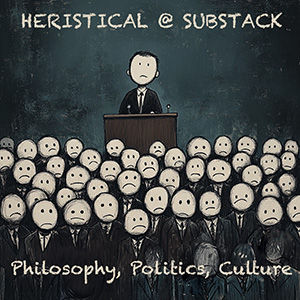
Politics are notoriously polarized these days, and two tropes in political disagreements are particularly exasperating. They elicit so much anger and frustration that they often simply stop the conversation. Here I seek to understand the employment of these gambits in such a way that they need not be conversation-stoppers. They can invite reflection and even further, more fruitful, dialogue.
You see and hear it all the time, and it drives you crazy! Think of a marriage or other close human relationship. One member of the couple says, in an accusatory and angry tone, “You lied about that.” The other replies, “But you did the same thing. You lied about it last week.” The exasperating thing is that the reply seems totally irrelevant to the charge of dishonesty: the previous lie doesn’t change the fact of the current lie. How is it a response at all? But the reply also seems to capture something real and resonant.
We find this “logic”—or better, illogic—in political conversations all the time. It is “whataboutism.” Politician A blames Politician B for supporting policies that increase the deficit, and Politician B makes the defense that A did that last year. As with the unhappy (or at least disagreeing) couple, the defense seems irrelevant to the charge. The fact that Politician A is (in some sense) guilty of inconsistency does not bear on our evaluation of Politician B’s behavior.
This kind of exchange occurs so frequently that it has become an expected (even if unwelcome) part of political discourse. Reflecting on this fact, it can seem startling that a conversational move that is so manifestly specious could be so prevalent, and, in many quarters, deemed perfectly acceptable. It reminds one of the child who responds to her parents’ stern admonition, “But he hit me first. He started it!” When the (now former) President of the United States invokes the same idea, replying to a challenge with, “He started it,” the reply is equally puerile and beside the point. Sometimes the history of charges and countercharges is so tortuous that it calls to mind the old (not-so-funny) joke about the Middle East, “This all started when they hit us back.”
We all think that “two wrongs don’t make a right.” The contemporary philosopher, Gerald Dworkin, has asked (in jest), “If two wrongs don’t make a right, is there some number N, such that N wrongs do make a right?” The answer is, obviously, “No.”
Why, however, is such a manifestly ridiculous interaction so prevalent in political discussion and analysis, and even human conversations in a broad range of contexts? How could something so apparently stupid be so “natural,” so to speak? It would be desirable to find a legitimate element in such a prevalent conversational reflex.
My suggestion is that whataboutism should not be interpreted primarily as a challenge to the blameworthy status of the behavior, but to the situation of the blamer. The behavior of an individual can be blameworthy, even if it is not acceptable for a certain other individual to blame her for it, especially if that second person has done the same thing. Blaming in this context would be hypocritical. This point applies to all of the contexts we have mentioned above, and others: it is fair to criticize a liar for hypocrisy in blaming another for lying, but that is totally irrelevant to whether the lie in question is objectionable. Not everyone can legitimately blame someone for doing something that is in fact blameworthy; it is like the pot calling the kettle black. In some cases, the blamer does not have the “standing to blame.” The standing to blame has been explored insightfully by contemporary philosophers like Thomas Scanlon and R. Jay Wallace. Hypocrisy is one, but not the only, reason a person might lack standing to blame.
We can now explain both the insight that whataboutism is logically outrageous and its commonplace status in human interactions, and, in particular, politics. Interpreted as a criticism of the claim that some behavior is blameworthy, it involves a numbingly gross non sequitur. Interpreted as a critique of the hypocrisy of the blamer, it is entirely fair. So interpreted, it can (perhaps surprisingly) play a helpful role. It invites the blaming individual to reflect on his blaming in this particular context, and perhaps more generally. It urges him to eliminate inconsistency (and the associated hypocrisy). Perhaps the accuser will see that the behavior in question is not in fact blameworthy, or less so than he had thought. Or maybe he will see that his previous behavior was wrong and commit to improve in the future. Less blame and greater consistency can help to heal a toxic relationship, and, we can hope, a toxic politics. An awareness, even implicit, of these “positives” might explain the deeply human tendency toward whataboutism (although a part of the explanation is, no doubt, the human tendency toward knee-jerk reactions).
In practice, however, this argumentative ploy rarely has good consequences. That we naturally have the “what-about-you?” reflex, and give voice to it, typically doesn’t help. The move is often used as a conversation-stopper, as part of a hostile and unproductive ballistic exchange. The aim is often to shield problematic behavior or policies from assessment. It could however be a good thing if we stepped back from our heated disagreements and learned a lesson from this instinct: when inconsistency in the blamer is noted, she should reflect on her own views and actions. However, inconsistency in the blamer should not cloud our judgment of the behavior under consideration. “What about you?” is an invitation to reflection and can even be a conversation-starter. We should frame our contributions so that they elicit, rather than preempt, further reflection.
A particularly egregious—and exasperating—example of whataboutism emerged in the impeachment trial of Donald Trump. Republicans called it “divisive,” and called out the Democrats for their alleged hypocrisy, insofar as they had criticized Trump repeatedly for being divisive. But note that divisiveness is not the same as dividing; alternatively, gratuitous divisiveness is not the same as necessary division (or acting in a way that foreseeably causes division). The Democrats are not being hypocritical in calling out Trump’s divisiveness, while defending a trial that would cause divisions (believing that this is necessary for important goods—justice and reconciliation). So no hypocrisy here, and no grounds at all for whataboutism: the putatively identical behavior under consideration was not actually identical.
Similarly, consider a person who is incarcerated for a year after having been duly convicted of a crime. When he gets out of prison, he kidnaps the judge and forcibly detains him for a year. When the judge complains, the now-released criminal replies, “But what about you? You forcibly detained me in prison for a year, so you can’t complain.” Again: punishment after due process leads to conviction is not the same thing as kidnapping and detention. So no hypocrisy, and no grounds at all for “What about you?” The complaint is as ludicrous as the Republicans’ against the impeachment and trial of Donald Trump.
The same is true of Vladimir Putin’s many instances of whataboutism—he is perhaps the King of Whataboutism (not, as he would prefer, the King of Russia). When President Biden confronted Putin with the suppression of dissenting voices and, in particular, the horrific treatment of Alexey Navalny, Putin responded: But what about your forceful suppression of those opposing the government on January 6? And when Putin is confronted by human rights abuses, he points to the cruel and nauseating killing of George Floyd.
The analysis thus far can help in sort this out. Stopping the storming of a democratic government’s capitol building is totally different from stopping individuals from peacefully protesting. Not equivalent at all, so no hypocrisy here. The case of human rights violations is more challenging. We should take the critique seriously and honestly address our history of injustice. The United States often takes the high moral ground, but our self-described “moral exceptionalism” can get in the way of honestly confronting our own significant failings. (We will return to this point below.)
A second exasperating trope was exemplified after the horrifying and disgraceful January 6 rioting in Washington, D.C., the incitement of it by our (then) president, and its enabling by certain political officeholders and media outlets. Many, including President Biden, sought to calm and lead by saying “This is not who we are.” Observing the beatings by police of innocent blacks and the relatively mild reaction to the largely white rioters, and reflecting more broadly on the increasingly visible racism in the United States, it is natural to think the same thing: “This is not who we are.” These acts and activities, we feel, do not represent us—do not reflect who we really are as a nation.
There is an obvious response. White nationalism, racism, bigotry of all kinds, hate-inspired violence, intolerance of other perspectives, totalitarian tendencies and neo-Nazi rallies—this is really who we are. All of these disgraceful things have been present in our nation from the very beginning. The enslavement of blacks was monumentally cruel and unjust, as was Jim Crow, and yet many, including the past president of the United States, resist tearing down our monuments to this past. Despite our idealistic views of the United States—as a “shining city on a hill” and “morally exceptional”—the reality of our past and present belies all of this rhetoric.
So: “This is not who we are” resonates deeply,” but so does, “This is who we are.” The apparent disagreement comes to the fore in times of crisis, such as now. How do we resolve it? How can we understand the two views in a way that respects the truth in each?
Return to the analogy with a couple (fertile grounds for studying conflict!). In a relationship, sometimes one person betrays the other’s trust, perhaps in a secret and serious act of infidelity in an otherwise healthy partnership. The discovery of this sort of betrayal is devastating and will lead (at the very least) to many painful conversations. In these heated conversations, the unfaithful person almost certainly will say, “This is not who I am.” Given that he has been a reliable partner (apart from this violation), there is some truth to the assertion. But the one who has been betrayed is equally certain to respond, “In fact, this is who you are. Your behavior shows who you really are, despite what you say to cover your [tracks]. You did this—you can’t deny that this is you.” Again, one can recognize some element of truth in the vehement and heartfelt assertions of both partners.
The solution is similar in both the case of the couple and the nation. We need to start by distinguishing between two ideas of the self. I would call one concept the “ideal self,” and the other, “the actual self.” The person who has engaged in betrayal is actually (at least partly) a betrayer. That’s part of their actual self. It need not, however, be (part of) their ideal self—the self they aspire to, based on values they have adopted. The ideal self is similar to the psychoanalytic notion of the “ego-ideal.” So there is indeed truth on both sides. “This is not who I am” is correct because it is true to say, “This is not my ideal self.” But “This is who you are” is correct because it is true to say, “This is your actual self.”
Same with our nation. The horrible things are not part of our ideal identity, but they are indeed part of our actual identity. In both the case of the relationship and the nation, the two sides are only apparently disagreeing. The appearance of real disagreement is however an illusion created by the way we would typically express the points. If I say, pointing to one ball, “This ball is red,” and you say, pointing to a different ball, “This ball is not red—it’s blue,” we are not really disagreeing, because we are referring to different things. The identity claims above do not really conflict, because they are about different selves. They are not saying contradictory things about the same self.
There’s nothing magic (for me) about the term, “ideal self.” We might call it the “aspirational self.” Additionally, there is no need to “reify” this sort of “self” (or the actual “self”). I employ such terms as shorthand for motivational subsystems or networks. All of us have various different “parts” of our motivational economies, not always synchronized. These subsystems can issue in choices and actions. We don’t need to think of them as little selves or “things.”
How can progress be made? The difficult challenge is to bring the ideal and the actual selves together, or at least closer together. We need to make our actual identity more like our ideal identity. A couple can try through couples’ therapy or just plain honest conversation and action. A nation has to do it through politics and the rule of law. Our politics are currently in shambles and the rule of law under siege. We can only hope that they are not irretrievably so.
Couples, even the best, “fight” often. We can find recurrent strategies in their discourse. It is noteworthy that these also take place in broader conversations, for example, about politics. Tropes like “What about you?” and “This is not who we are” frequently function as conversation-stoppers. They infuriate people to whom they are directed, and tend to elicit formulaic replies, such as “This is who you are.” At a deeper level these conversational moves can be thought of as invitations to further reflection–on our values and the consistency of our values and behavior. They are (in part) a challenge to live up to our values.
When we calm down and return to the topics of the disagreement, we can begin a process of reflection, which can go in different directions, and end up in different places. This even opens up the possibility of further conversations in the future. In inviting further reflection we are treating our interlocutor as someone with whom we can potentially have (or continue to have) fruitful dialogue and a healthy relationship. We are addressing them as capable of being guided by their values, and in this sense treating them with respect.
The contemporary philosopher David Beglin has emphasized that we should conceptualize our practices of holding each other accountable as parts of ongoing conversations among participants who are invested in sharing the same basic values and seeking to understand them more concretely and bringing their behavior in line with them. Others, including Thomas Scanlon, have conceptualized morality in terms of co-deliberation among persons seeking to live together in a way that can be justified to each other. We can think of certain personal and political disagreements in these sorts of ways. The sound and fury signifies something important, if we look hard enough (and are willing to suppress our initial dialectical rage).
In the end, that’s what it’s all about—ideally, at least.
John Martin Fischer is University Professor in the University of California, and the author of Death, Immortality, and Meaning in Life (Oxford University Press, 2020).

